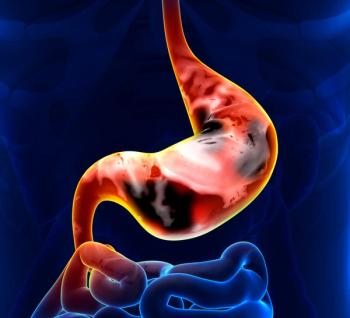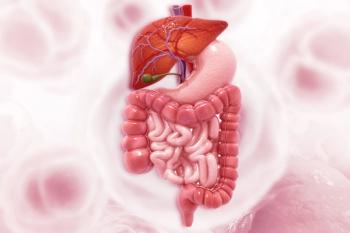
Oncology NEWS International
- Oncology NEWS International Vol 7 No 5
- Volume 7
- Issue 5
NCCN’s New Guidelines for Colon Cancer Screening Reflect ‘Remarkable Consensus’
FORT LAUDERDALE, Fla--The National Comprehensive Cancer Network (NCCN) colon cancer screening guidelines committee came to "a remarkable degree of consensus on the recommendations," Stephen Gruber, MD, PhD, MPH, said at the group’s third annual conference. The NCCN is a coalition of 16 leading US cancer centers.
FORT LAUDERDALE, Fla--The National Comprehensive Cancer Network (NCCN) colon cancer screening guidelines committee came to "a remarkable degree of consensus on the recommendations," Stephen Gruber, MD, PhD, MPH, said at the groups third annual conference. The NCCN is a coalition of 16 leading US cancer centers.
Dr. Gruber, of the University of Michigan, Ann Arbor, presented the guidelines for persons with a family history of the disease, and Bernard Levin, MD, of the M.D. Anderson Cancer Center, discussed the guidelines for individuals at average (or normal) risk.
Dr. Levin explained that average risk refers to asymptomatic persons over age 50 with no family history of colon cancer. For this group, screening should begin at age 50 using a combination of annual fecal occult blood testing (FOBT) and flexible sigmoidoscopy every 5 years.
"At present, the data are not sufficient to definitely recommend alternative screening strategies such as colonoscopy every 10 years or flexible sigmoidoscopy plus double-contrast barium enema every 5 years," he said. A randomized controlled trial to answer the question of colonoscopy has been proposed to the NCI by Sidney Winawer, MD, he added.
The sigmoidoscopy should be performed by trained personnel using a 60 cm instrument, he said. "Polyps under 1 cm should be biopsied to determine if they are hyperplastic or adenomatous."
If FOBT or sigmoidoscopy is positive, further evaluation is recommended, either colonoscopy (preferred) or flexible sigmoidoscopy plus double-contrast barium enema. If colonoscopic polypectomy is judged to be incomplete or preparation inadequate, double-contrast barium enema may be added.
If 10 or more polyps are found, the individual should be considered for genetic counseling or testing. Any adenoma should be removed, with colonoscopic follow-up at 3 years after the initial exam.
The fecal occult blood test should be done with three successive stool specimens and with the patient on a prescribed diet, "not at digital rectal exam," Dr. Levin said. Although guaiac-based technology is used at present, "in the future it is quite likely that this will switch to immunochemical or molecular techniques currently being developed and tested."
The fecal occult blood testing should be coordinated by a health care provider, he said, to ensure adequate follow-up of patients with a positive test result.
Patients with inflammatory bowel disease require increased surveillance--colonoscopy every 1 to 2 years in patients with clinically quiescent disease. Screening starts 8 years after the onset of symptoms if pancolitis or 15 years if left-sided colitis.
"Colonoscopic biopsy should be done by someone who is very familiar with the appearance of chronic inflammatory bowel disease," Dr. Levin said. Two biopsies every 10 cm are obtained for histologic examination. Strictures should be evaluated thoroughly by biopsy as well as brush cytology. "And any evidence of a mass, particularly those which can harbor an underlying malignancy, the so-called dysplasia-associated lesions, is, of course, of extreme concern," he said.
He cautioned that interpretation of dysplasia "is tricky," and slides need to be read by an experienced pathologist and confirmed if possible. Patients with "indefinite dysplasia" may be able to be followed safely, but any evidence of dysplasia, low or high grade, "should optimally lead to a decision to remove the colon," he said.
Familial Adenomatous Polyposis
Dr. Gruber stressed the distinction the panel drew between a personal history of familial adenomatous polyposis (FAP) and a family history of the disease, "because it makes a dramatic difference in the way we approach these individuals."
For patients with a personal history of FAP (ie, the individual who presents with hundreds of polyps lining the colon whether or not there is a family history), treatment is straightforward--colectomy. Genetic testing for the APC gene is irrelevant to the patients treatment but is recommended for risk assessment in family members.
The recommended surveillance after colectomy is sigmoidoscopy every 6 months for 3 years--a flexible sigmoid-oscope should be used if the rectum remains in place--plus fecal occult blood testing annually, upper endoscopy every 4 years, and physical exam every 1 to 2 years. Dr. Gruber noted that upper endos-copy need not be performed as often as sigmoidoscopy, since most polyps of the upper colon do not have the same malignant potential as ones in the lower colon unless dysplasia is found.
In presymptomatic patients who may have an FAP mutation based on family history, screening guidelines depend on whether the family mutation is known. "If the family mutation is known, we then can consider APC testing of at-risk family members," Dr. Gruber said.
If a family member is found to have the mutation, he or she has virtually a 100% probability of developing FAP. For these individuals, the screening recommendation is flexible sigmoidoscopy every 12 months beginning at puberty.
Frequent screening is necessary, he said, because "you dont know when the polyps are going to develop, but as soon as they do develop, thats when you need to initiate therapy with colectomy." He pointed out that since screening begins at puberty, genetic testing of family members should begin at a fairly young age, generally just prior to puberty onset.
Dr. Gruber said that APC mutation testing is quite accurate, but even in persons who test negative, the panel recommends flexible sigmoidoscopy once at age 25. "If we do find polyps, it means the genetic test was wrong. If there are no polyps, we recommend routine screening beginning at age 50."
Some people who undergo genetic counseling for FAP decide, for one reason or another, sometimes financial, not to be tested, Dr. Gruber said. These people are considered to be potentially at risk and are offered intensive screening: flexible sigmoidoscopy every 12 months until age 24; then every 2 years until age 34, every 3 years until age 44, and every 3 to 5 years thereafter.
For individuals with a family history but no known mutation, APC testing of an affected family member should be considered. If testing reveals no mutation, "this is not the same as a negative test," Dr. Gruber emphasized. "APC can only be negative if you know what the mutation is in the family." In this case, the recommendation is the same as for those in whom the family mutation is known but who do not undergo testing.
Screening for HNPCC
Hereditary nonpolyposis colorectal cancer (HNPCC), Dr. Gruber said, is an area in which the panel had far less data to support its screening recommendations than were available for average-risk patients, patients with inflammatory bowel disease, and those with FAP. "There are some trials, but the data are not as strong as those from the randomized trials of fecal occult blood testing and the case-control studies of flexible sigmoidoscopy," he said.
Although the panel was able to come up with consensus guidelines adopted unanimously, Dr. Gruber stressed that the recommendations must be considered as category 2 (somewhat controversial) because of the weak supporting data.
The panels risk factors for HNPCC include colon cancer in a first- or second-degree family member, colon cancer diagnosed under age 50, multiple generations affected, multiple primaries (endometrial, ureteral, small bowel, stomach, ovarian), and the presence of right-sided colon cancer.
The family history obviously is all important in making this diagnosis. "Make sure you include all first-degree relatives--parents, siblings, and offspring--and second-degree relatives--aunts, uncles, grandparents, half-siblings--and any additional relatives with cancer, including first cousins," he said. If there is a concern that the syndrome might be present, "you can ask for the help of a genetic service or counselor," he added.
How to proceed with the molecular diagnostic workup once HNPCC is suspected is somewhat controversial. First, he said, the clinician should ask if stored tumor is available from an affected family member to look for the presence of microsatellite instability, also known as replication error (RER) phenotype.
If such a specimen is available and the RER test is negative, the family is very unlikely to have true HNPCC, he said, but these families are still considered at increased risk because of their history. In RER-negative families, the recommendation is to consider initiating colonoscopy at age 20 to 25, repeated every 1 to 2 years. In females, annual transvaginal ultrasound or endometrial aspirate can be considered starting at age 25 to 35.
If the individual is not a candidate for repeat screening, subtotal colectomy may be considered. "Some people cant undergo or would decline colonoscopy on a regular basis," he said, "and although it is an unusual situation, some individuals have undergone subtotal colectomy even in the presence of an RER-negative test, if the family history is strong." Total hysterectomy and bilateral salpingo-oophorectomy are not recommended.
If a family member has an RER-positive tumor, molecular testing for MSH2 and MLH1, two mismatch repair genes that account for about 60% of all HNPCC, is recommended. However, he cautioned that this is expensive testing that doesnt always provide an answer.
When a mutation is found, it is important to offer testing to other family members. A negative test spares the individual the expense of intensive surveillance. "It doesnt mean they are at zero risk," he said. "They are at average risk and require routine screening."
Articles in this issue
over 27 years ago
Risk Assessment: Who Should Have BRCA Gene Testingover 27 years ago
Panel Supports Approval of Label Expansion for Ceprate SC Systemover 27 years ago
NCI Office Focuses on Minority Accrual in Cancer Clinical Trialsover 27 years ago
Increased Folate Level Appears to Lower Colon Cancer Riskover 27 years ago
Cluster of Risk Factors May Predict Increased Risk of Colon Cancerover 27 years ago
Colon Cancer Prevention Fits Into Healthy Lifestyleover 27 years ago
When to ‘Walk Away’ from a Managed Care Contractover 27 years ago
Nutritional Assessment ‘Vital,’ but Still Difficult to Doover 27 years ago
Prevention Research Needs to ‘Go Mainstream’over 27 years ago
Hyperthermia May Stimulate Immune SystemNewsletter
Stay up to date on recent advances in the multidisciplinary approach to cancer.

















































































